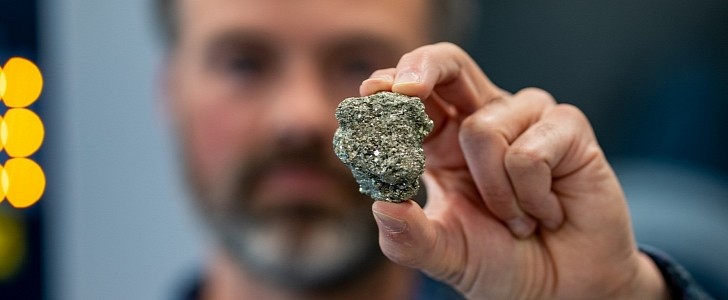If companies such as QuantumScape and Solid Power manage to deliver all they promise about their solid-state lithium-metal platforms for batteries, we’ll start to see incredible new cells. More than that, the focus will shift: instead of worrying about the anode that these platforms replace, everyone will try to improve the cathodes. That’s what Solid Power celebrated today after it announced it won a contract with IARPA (Intelligence Advanced Research Projects Activity) to develop a FeS2 cathode.
Solid Power may receive up to $12.5 million to find a way to make FeS2 (iron sulfide pyrite) work as the positive electrode in a lithium-ion cell. That part of a program from IARPA called RESILIENCE (Robust Energy Sources for Intelligence Logistics in Extreme Novel and Challenging Environments). It will last three years and nine months and end in May 2025.
That’s the time Solid Power and the University of Maryland have to develop a nano-scale FeS2 cathode. It will be used to create a multi-layer cell able to deliver “high energy density, high power density, long calendar life, quiet operation, and robustness to extreme environmental conditions.” The potential energy density for this chemistry reaches about 1,600 Wh/kg, but Solid Power’s target is to achieve about 500 Wh/kg.
It may sound like a modest goal. However, if the company gets there, it will have a battery with double the energy density of the best ternary cells currently available. That would already be pretty amazing, but the primary advantage such a cell will offer relates to cost.
A battery with a lithium metal anode and a FeS2 cathode would eliminate the need for nickel or cobalt, two of the most expensive metals that compose current cells. According to Solid Power, prices for the cathode would fall from around $35/kWh to $3/kWh. That’s an 85% cost reduction in the most expensive element of lithium-ion cells. Unfortunately, Solid Power did not mention the total impact on the price that would have.
One of the reasons for that is that we have no idea how much the Solid Power solid-state lithium-metal platform would impact battery prices. The company is yet to present a production cell with its technology. Ford and BMW are the first car companies expected to receive it.
The other is that such a cathode is still only theoretical. Solid Power and the University of Maryland will use the money to try to achieve these goals, but the contract may end with no progress. It would not be the first time that happened, and it would certainly not be the last. There’s also the possibility that they find something promising but still not fit for automotive use. We’ll only know by May 2025. Until then, all we can have is hope that these researchers will find a solution for cheaper and better batteries.
That’s the time Solid Power and the University of Maryland have to develop a nano-scale FeS2 cathode. It will be used to create a multi-layer cell able to deliver “high energy density, high power density, long calendar life, quiet operation, and robustness to extreme environmental conditions.” The potential energy density for this chemistry reaches about 1,600 Wh/kg, but Solid Power’s target is to achieve about 500 Wh/kg.
It may sound like a modest goal. However, if the company gets there, it will have a battery with double the energy density of the best ternary cells currently available. That would already be pretty amazing, but the primary advantage such a cell will offer relates to cost.
A battery with a lithium metal anode and a FeS2 cathode would eliminate the need for nickel or cobalt, two of the most expensive metals that compose current cells. According to Solid Power, prices for the cathode would fall from around $35/kWh to $3/kWh. That’s an 85% cost reduction in the most expensive element of lithium-ion cells. Unfortunately, Solid Power did not mention the total impact on the price that would have.
One of the reasons for that is that we have no idea how much the Solid Power solid-state lithium-metal platform would impact battery prices. The company is yet to present a production cell with its technology. Ford and BMW are the first car companies expected to receive it.
The other is that such a cathode is still only theoretical. Solid Power and the University of Maryland will use the money to try to achieve these goals, but the contract may end with no progress. It would not be the first time that happened, and it would certainly not be the last. There’s also the possibility that they find something promising but still not fit for automotive use. We’ll only know by May 2025. Until then, all we can have is hope that these researchers will find a solution for cheaper and better batteries.






